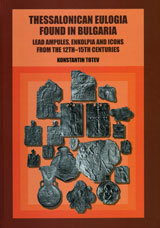- Американска и канадска художествена литература
- Антикварни книги
- Антични автори
- Балканска художествена литература
- Библиофилски издания
- Биология
- Българска художествена литература
- География, пътеводители
- Детска литература
- Европейска художествена литература
- Езикознание, лингвистика, семиотика, филология
- Езотерика, духовни учения
- Здравна и медицинска литература
- Земеделие и животновъдство
- Изкуство
- Икономическа литература
- История
- Календари, сувенири
- Компютърна литература
- Кулинарна литература
- Културология, етнология и фолклор
- Латиноамериканска художествена литература
- Литературна критика
- Литературна периодика
- Медии и комуникации
- Нобелова награда за литература
- Политология
- Правна литература
- Православна литература
- Психология
- Речници, справочници, енциклопедии
- Социология
- Спорт, хоби
- Точни науки, техника
- Учебна литература, Педагогика
- Философия
- Художествена литература от Азия, Африка и Австралия

Thessalonican Eulogia found in Bulgaria
Продуктов номер: 26034Изчерпана
Автор: Константин Тотев
Категория: Археология | Българска история на чужди езици
Издателство: Фабер
Състояние: Нова книга
ISBN: 9789544005566
204 страници
меки корици
Първо издание: първо издание, 2011 год.
Народност: българска
Lead ampules, enkolpia and icons from the 12th–15th centuries
The present study focuses on a group of monuments of Byzantine applied art recently unearthed on the territory of the Republic of Bulgaria. All are made of lead and represent part of the pilgrimage items produced in the second largest city of the empire -Thessaloniki, associated with the miracles and relics of St. Demetrius. In addition to the patron of the city whose relics begin to exude myrrh, here are venerated other local saints as well - St. Theodore, St. Matrona, St. Teodulus, St. Frontonus, some of whom are also myrrh-gushers. Very often the images of St. Demetrius are accompanied by effigies of his direct followers Nestor and Loup, as well as the military saints George, Theodore and Procopius.
The study devotes some space to all pilgrimage objects whose terminological definition and classification raises the question of continuity between early-, medium-and late Byzantine ampoules, pilgrim tokens, philacteria, souvenirs etc., which can be generally labeled as eulogia.
The preservation of relics in specially made small size artefacts, decorated with a selection of images and scenes, enables the possibility of their easy distribution in all parts of Christendom. Usually these are relic holders or reliquaries. Nowadays, only single copies with images of St. Demetrius can be connected with Thessaloniki. They are made of gold, silver and cell enamel cell and contain relics of the saint. Most of them are kept in the treasuries of famous Orthodox monasteries and Western European cathedrals, as well as in world famous museums and galleries. The Byzantine author Manuel Philes calls them enkolpions-reliquaries. The presence of a whole group of expensive reliquaries shows that besides the mass production of eulogia of cheaper materials such as lead, in Thessaloniki were also made reliquaries of precious metal for pilgrims of high rank, senior clergymen and guests with diplomatic missions.
The lead koutrubia ampoules are meant for storage of myrrh (fragrant oil), whose production from the 12th century onwards is associated with the cult of the defender of the city, St. Demetrius, and together with him the other local saints, whose images decorated the sides of the ampoules.
Different is the case of the lead koutrubia ampoules for the storage of myrrh (fragrant oil). In the 12th century the ointment is associated with the cult defender of the city, St. Demetrius, and possibly, along with him, also other local saints, whose images decorated the walls of the ampoules. It oozed only from the bodies of μυροβλητος (myrrh-gushing) saints. Through it the pilgrims communicated with the relics and the miraculous power of saints.
Of another nature and artistic decoration are the extremely rare lead enkolpions with the scene The miracle of the Greek youth rescued by St. Demetrius and a leaved cross, as well as an image of the three warrior saints Theodore, George and Demetrius and a leaved cross, made and used as pilgrim tokens as it seems during the Latin rule in Thessaloniki.
So far unknown was a series of bilateral eulogia icons cast of lead with varied iconographic repertoire, through which one can also can follow the trailof pilgrims in Southeastern Europe. The images and stories presented on them are usually directly related to the protection of those who wear them - pilgrims and soldiers.
The study of items of similar function and decoration, generally called eulogia, i.e. various pilgrimage tokens or souvenirs, enables to ascertain certain features and mutual interferences, which appeared during the crusades in the art of Byzantium and the Latin West. The Thessaloniki lead ampoules, enkolpions and icons indicate not only the manufacture and distribution of eulogia in the middle and late Byzantine period, but also reflect the mass nature of their production and the diversity of art subjects on these pilgrimage products.
The presented new material from Bulgaria includes more than 100 lead eulogia found during archaeological excavations or acquired as purchases in the museum network of this country, as well as those owned by private collectors. They are successively discussed in three groups, accompanied by a general catalogue. The newly found ampoules, enkolpions and icons significantly expand the circle of monuments of Byzantine metal plastics associated with pilgrimage. The material in question creates a real picture of the production in Thessaloniki of this mass products intended for pilgrims from the whole Christian world. The availability of primitive traits in the design of some images and the cheap materials used show that these are objects which were widely popular. Their recovery in Bulgaria traces the paths of pilgrims from Thessaloniki to the Bulgarian towns and fortresses in the 12th—14 th centuries.